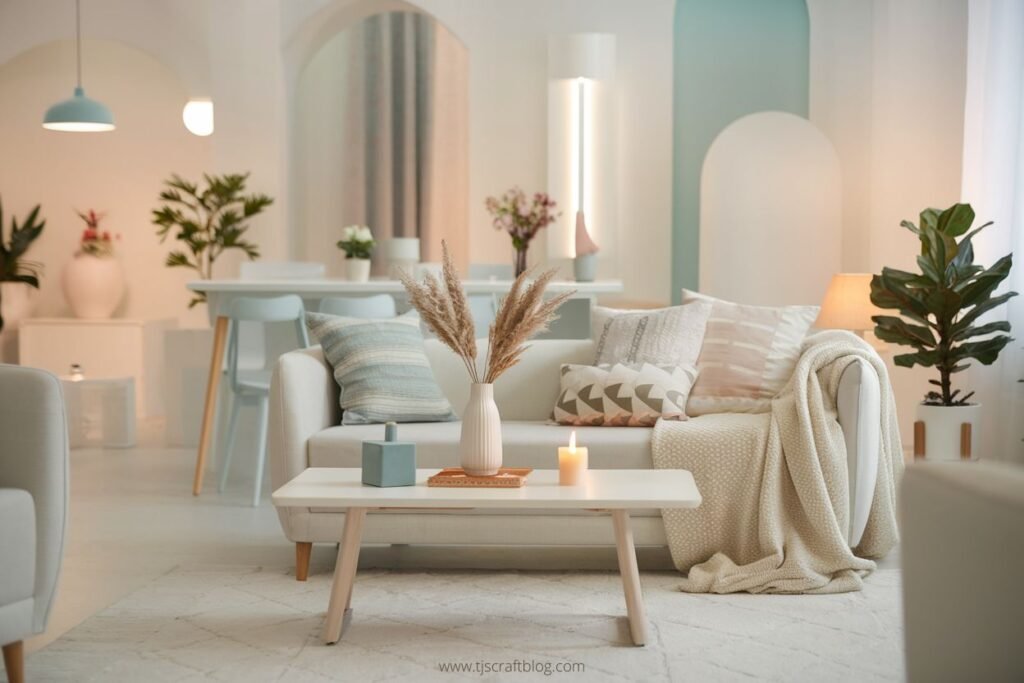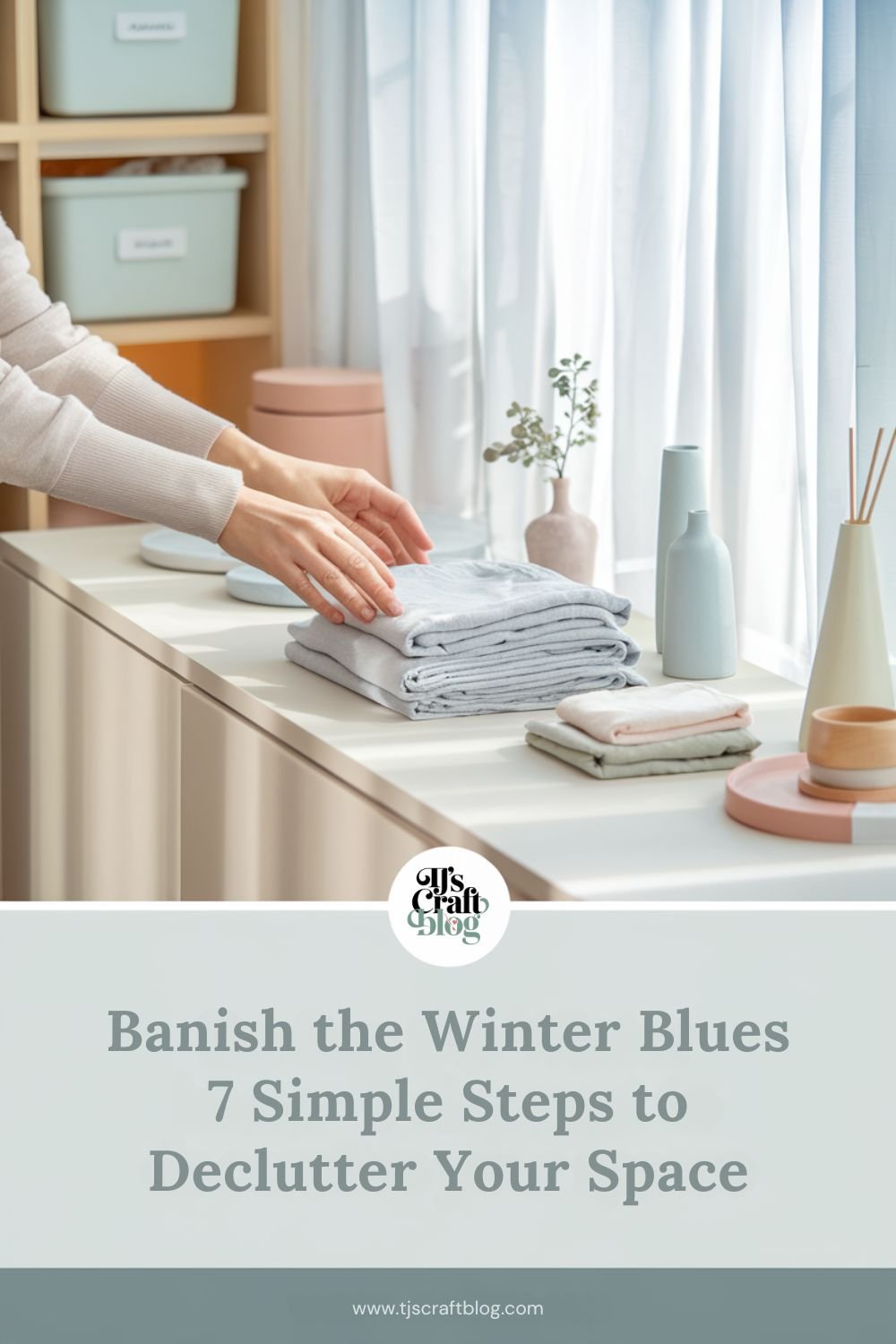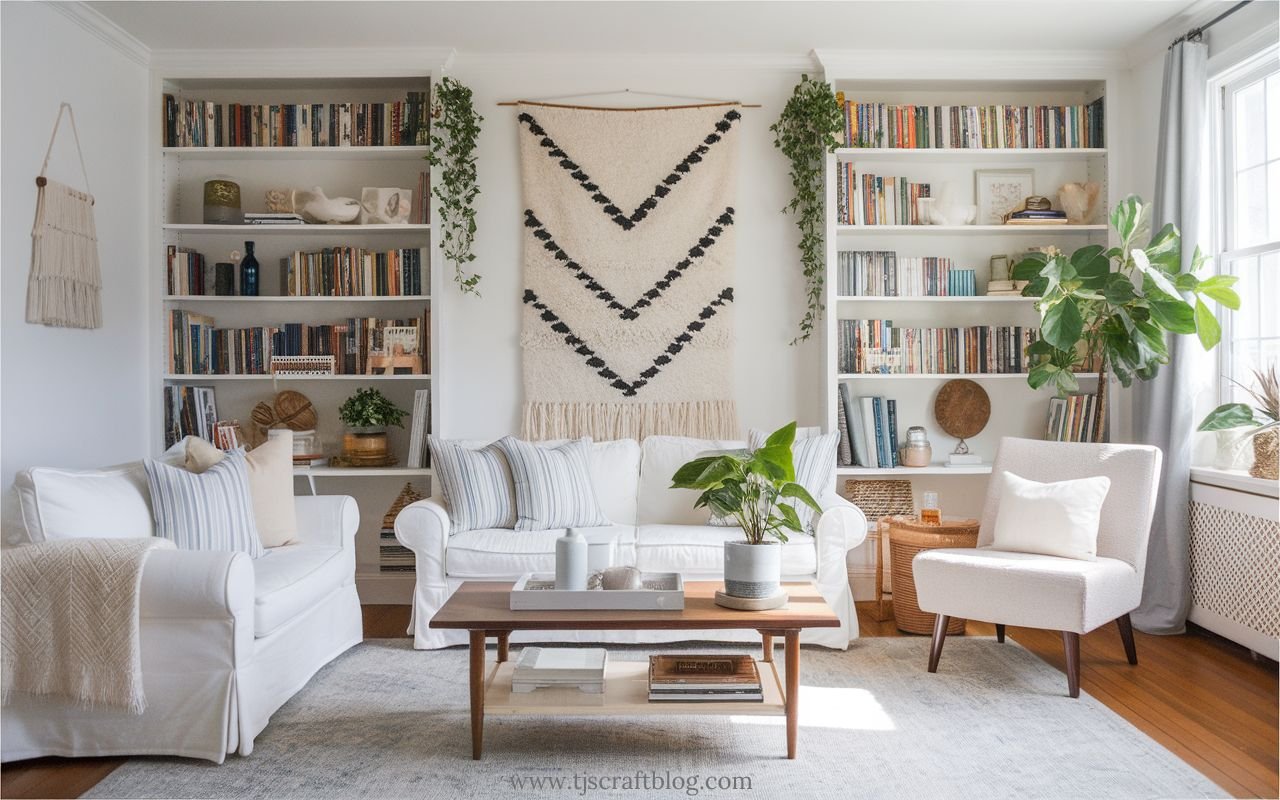This post contains affiliate links. If you purchase through these links, I may earn a small commission at no extra cost to you. Thank you for supporting my blog!

Winter often brings a sense of stagnation, making your space feel cluttered and overwhelming. To combat these feelings, taking the time to declutter your environment can rejuvenate your mood and improve your mental clarity. In this blog post, you will discover seven simple yet effective steps to transform your space, creating a serene and organized atmosphere that will help you overcome the winter blues and welcome a brighter season ahead.
1. Understanding the Winter Blues
The winter blues can feel like an unwelcome guest in your life as the days grow shorter and the temperatures drop. If you’ve ever felt a sense of sadness or lethargy during this season, you’re not alone. Many people experience fluctuations in their mood during winter months, which can be linked to the lack of sunlight and colder weather.
Defining the Winter Blues
Above all, it’s important to recognize what the winter blues really entail. This term is often used to describe feelings of mild depression or low energy that may occur during the colder months. Unlike Seasonal Affective Disorder (SAD), which is a clinically diagnosed condition, the winter blues generally refer to less severe feelings of sadness that can impact your day-to-day enjoyment and motivation.
Causes and Symptoms
On a broader scale, the winter blues can be attributed to a variety of factors. One of the primary causes is the reduction in sunlight exposure, which can affect your body’s natural rhythm and energy levels. The cold weather can also lead to reduced physical activity, contributing to feelings of lethargy and disconnection. Symptoms you might experience include irritability, fatigue, trouble concentrating, and a general sense of melancholy.
Winter also tends to bring along a heavier emotional load, as the holidays can be overwhelming or remind you of past events. These feelings can compound, creating a cycle that can be hard to break. Engaging in activities that enhance your mood, such as decluttering your space, may be one effective way to combat these feelings.
2. The Benefits of Decluttering
Against the backdrop of the winter blues, engaging in decluttering can serve as a therapeutic activity. By clearing out unnecessary items from your space, you not only create a more organized environment but also foster a sense of control and accomplishment. When you declutter, you make way for positivity and clarity in your life, which can significantly uplift your spirits.
At its core, decluttering provides a fresh perspective. You might find that by removing physical clutter, you also clear mental clutter. The process can be liberating and lead to improved focus and productivity, making it easier for you to tackle other challenges that accompany the winter months.
3. Preparing for Decluttering
Now that you recognize the power of decluttering to lift your spirits, it’s time to prepare yourself for the journey ahead. This preparation phase will help clarify your goals and ensure that you approach your decluttering with focus and intention. By setting the right mindset and timeline, you can make the task less overwhelming and more rewarding.
Setting Your Intentions
About setting your intentions, it’s important to start with a clear understanding of what you hope to achieve through this process. Are you looking to create a more peaceful and organized living space, or do you want to feel lighter and more in control of your environment? Whatever your reasons may be, articulating them will provide you with the motivation needed to see your decluttering project through to the end. This clarity also allows you to differentiate between what needs to stay and what can be released.
Additionally, take a moment to reflect on how you want your space to function after decluttering. Consider the activities you want to enjoy and the atmosphere you wish to cultivate in your home. When you envision the desired outcome, it becomes easier to let go of items that no longer serve your needs, making your decluttering journey feel purposeful and fulfilling.
Creating a Decluttering Schedule
Behind every successful decluttering project is a well-planned schedule that keeps you on track. Begin by assessing the areas of your home that need attention, and prioritize them based on your lifestyle and needs. Assign a specific time frame for each space, ensuring you allow sufficient time to sort through items, make decisions, and organize what remains. Break the process down into manageable chunks, perhaps focusing on one room or closet at a time, to prevent feeling overwhelmed.
Also, consider your personal routine when creating this schedule. Choose days and times when you have the availability to dig in and focus. Mark these decluttering sessions on your calendar and treat them as important appointments. Consistency will help you build momentum, turning decluttering into a habit rather than a chore.
Gathering Your Supplies
For a smooth decluttering experience, gathering the right supplies before you begin can make a significant difference. Start by collecting items like boxes or bins for sorting, trash bags for any items that need to be thrown away, and containers for donations or items you plan to sell. This organized approach allows you to efficiently categorize and dispose of items as you work, streamlining the process and helping you maintain focus.
The more prepared you are, the easier the decluttering will be. Consider including labels for boxes and bins to easily identify their contents, and don’t forget to have cleaning supplies handy for any tidying up afterward. With everything in place, you’ll be ready to initiate on your decluttering journey with confidence and clarity.
4. Room-by-Room Decluttering Guide
Keep in mind that decluttering does not have to be an overwhelming process. By tackling each room individually, you can create a focused and efficient approach. Start with your living room, the heart of your home where you unwind and entertain. Begin by clearing surfaces like coffee tables and side tables. Remove everything that doesn’t belong there, sorting items into three categories: keep, donation, and trash. Once you have a clean slate, take a moment to assess the remaining items and organize them in a way that fosters relaxation and a peaceful atmosphere. Consider designating specific spaces for books, magazines, and electronics to further enhance your living room’s functionality.
Living Room
RoombyRoom, tackle the clutter that often accumulates in this communal space. You may find that old magazines, outdated decor, or even surplus furniture can hinder the inviting atmosphere of your living room. Aim to create a serene environment by letting go of items that no longer serve a purpose or bring you joy. Prioritize functionality as you arrange your furniture and accessories in a way that maximizes space while contributing to a warm and welcoming feel.
Bedroom
Organizing your bedroom can significantly impact your overall well-being. Start by clearing out your wardrobe and drawers, sorting through clothing, shoes, and accessories. Evaluate what you wear regularly and consider donating items that have been untouched for a while. Utilize storage solutions, like bins and baskets, to keep your belongings organized and easily accessible. Decluttering your bedroom can create a more soothing environment in which you can relax and recharge.
Assessing your bedroom space is a key part of this process. Focus not just on tangible items but also on the visual clutter that may be distracting you. Try removing excessive decor or repurposing storage for a more minimalistic approach. A clean, orderly bedroom can enhance your sleep quality and create a serene retreat for you to unwind after a long day.
Kitchen
After addressing your living room and bedroom, shift your attention to the kitchen, which is often a high-traffic area in many homes. Start by clearing countertops and pantry shelves. Discard expired food items and appliances you seldom use. Break down the decluttering process by focusing on specific areas like utensils, pots and pans, and small kitchen gadgets. Group similar items together to maintain organized spaces that encourage efficient cooking and meal prep.
It can also be beneficial to streamline your kitchen tools. Consider investing in multifunctional gadgets that save space and time, allowing you to create an efficient cooking environment. Taking these steps will transform your kitchen into a more organized and enjoyable space where you can cook and gather with family.
Home Office
Between your living room, bedroom, and kitchen, don’t forget about your home office or workspace. This is where productivity happens, and clutter can quickly diminish your focus. Start by clearing off your desk and organizing paperwork into designated folders. Assess your electronic devices, ensuring cords are untangled and devices are functioning as intended. Create a system for managing your to-do lists and notes so you can streamline your workflow.
At the end of your decluttering journey, you will appreciate the improved efficiency of your home office. A tidy workspace will not only encourage better focus but also enhance your creativity and motivation. Make it a habit to regularly review your office supplies and documentation to prevent clutter from piling up again. Your organized home office will contribute positively to your overall productivity and well-being.
5. Mindful Decluttering Techniques
Once again, the winter months can leave you feeling weighed down by clutter and disorganization. However, by employing mindful decluttering techniques, you can create a more serene environment and refresh your mental state. Start by approaching each item in your space with intention and a clear focus on its purpose in your life. You might find that the simple act of assessing what truly matters reduces stress and enhances your well-being.
The One-Year Rule
Mindful decluttering can easily begin with the One-Year Rule. This technique prompts you to evaluate items based on whether you have used or worn them in the past year. If not, it’s time to consider if they truly hold value for you. This helps to streamline your belongings and encourages you to hold on only to the items that enrich your life or serve a specific purpose.
By applying the One-Year Rule, you promote a more conscious way of living, choosing to only keep items that bring you joy or utility. It’s an excellent way to make decisions on those sentimental items that have accumulated over time and helps combat the emotional struggle associated with letting go. Challenge yourself to take a good look at your wardrobe, living space, and even your digital files to lighten your load.
The Four-Box Method
For those facing significant clutter, the Four-Box Method is a highly effective approach. This technique involves labeling four boxes as “Keep,” “Donate,” “Trash,” and “Maybe.” As you sort through your belongings, you’ll place items into these boxes based on their utility and emotional significance. This method encourages a systematic way to tackle clutter, breaking the process into manageable steps that enable you to gain clarity on your possessions.
For instance, while sorting through your items, you may be surprised by what you decide to put in the “Donation” box, freeing up space for the things you value most. This method allows you to analyze each item’s use and sentiment carefully, promoting a sense of accomplishment as you see the boxes fill up with decisions you’ve made. It also creates a tangible recognition of the work you’ve put into reducing your clutter.
The Minimalist Approach
Across the mindful decluttering landscape, the Minimalist Approach stands out as a philosophy that encourages living with less to create a more meaningful environment. This perspective shifts the focus from simply decluttering to embracing a lifestyle where only the imperatives remain. By adopting this mindset, you can evaluate each item in your home critically and question whether it brings value to your life or if it’s just taking up space.
Also, practicing this approach means redefining your relationship with material possessions, emphasizing quality over quantity. It can lead to a more open, peaceful space that reflects your values, allowing for greater ease in your daily life. The Minimalist Approach can also encourage sustainable choices, inspiring you to find joy in experiences and relationships rather than accumulating goods that may lose their appeal over time.
6. Maintaining a Clutter-Free Environment
Despite your best efforts to declutter, maintaining a clutter-free environment requires consistent effort and strategic planning. Once you’ve successfully tidied your space, creating systems and habits is vital to prevent your surroundings from returning to a state of chaos. With a little diligence, you can ensure that your home remains a peaceful retreat, free from the winter blues that clutter can bring.
Establishing Daily Habits
Environment plays a significant role in your overall well-being, and establishing daily habits is key to keeping it tidy. Take a few minutes each day to put things back in their designated places. Simple tasks like making your bed, putting away dishes, and sorting mail can greatly reduce clutter build-up. A daily ritual of decluttering for just ten to fifteen minutes can shift your mindset and make it easier to enjoy your space.
Incorporating these habits into your routine allows you to effortlessly maintain a clean and organized environment. Consider designating a specific time each day, such as before bedtime, to assess your space and put things back where they belong. By making these habits part of your daily life, you can make clutter a thing of the past.
Regular Check-Ins
Establishing regular check-ins with yourself is a powerful way to keep your space clutter-free. Schedule time each month to evaluate your belongings and assess whether everything you have still serves a purpose. This intentional reflection will help you stay mindful of what you truly need and eliminate items that no longer contribute to your happiness or functionality.
To ensure that clutter doesn’t creep back into your life, consider creating a calendar reminder for these check-ins. Reviewing your space regularly will also reinforce your commitment to a tidy environment, prompting you to remain focused on what you want to keep and what you can let go. A proactive approach will help you maintain order and clarity in your space.
Inviting Others to Help
After making strides in decluttering, inviting others to help you can provide additional motivation and support. Engage your friends or family to join you in your efforts for a decluttering day. Working together not only makes the process more enjoyable but can also lead to fresh perspectives on what items to keep or discard. It helps to keep you accountable and brings an element of fun to the task at hand.
Due to the collective energy and ideas that a group provides, you may find it easier to let go of items you’ve been holding onto. Plus, having others involved creates a more significant sense of community, reinforcing the importance of shared spaces and collective well-being. You’ll be surprised at how much you can achieve, and this camaraderie can lead to lasting memories beyond just decluttering.
7. The Emotional Impact of a Decluttered Space
After clearing out your surroundings, you might be surprised at the profound emotional changes that can occur. A decluttered space not only enhances your environment but also profoundly affects your mental health. By removing excess items, you create a more serene atmosphere that encourages relaxation and mindfulness. This can lead to a more positive mindset, allowing you to approach daily tasks with renewed energy and clarity.
Stress Reduction
An organized space can significantly reduce the anxiety that comes from chaos and disorder. When you’re surrounded by clutter, it’s easy to feel overwhelmed and distracted, which can exacerbate feelings of stress. In contrast, a tidy environment provides a sense of control and calm, allowing you to breathe easier and focus on what truly matters. By simplifying your space, you can create a sanctuary that nurtures your well-being.
Improved Focus and Productivity
With fewer distractions in your environment, you can direct your attention toward more important tasks. A decluttered space helps eliminate mental clutter, making it easier for you to concentrate on your goals. When everything has its place, you can quickly locate what you need, which saves time and boosts your overall efficiency. This streamlined approach allows you to make the most of your day.
It is crucial to recognize that improving focus is not just about having a clean desk; it is about fostering a mindset conducive to productivity. When your environment reflects clarity and organization, it encourages you to adopt similar habits in other areas of your life. This shift can enhance your ability to think critically and tackle complex tasks with confidence.
Enhancing Creativity
To truly tap into your creative potential, having a clutter-free space is paramount. When you free your surroundings from unnecessary items, you create an open canvas for inspiration to flow. A clean environment cultivates mental space, allowing you to visualize and explore new ideas without the hindrance of distractions. You’ll find that the clarity gained from decluttering often translates into fresh perspectives on projects and problem-solving.
Consequently, as you maintain an organized area, you may discover an increased willingness to experiment and innovate. When your space feels inviting and open, it becomes a safe haven for exploration. Whether you’re working on art, writing, or any other creative pursuit, a neat environment prompts you to dive deeper into your imagination and produce your best work. Embrace the power of a decluttered space to unleash your creativity.
Summing up
To wrap up, tackling the winter blues through decluttering your space can have a significant impact on your mental well-being. By implementing the seven simple steps outlined, you’re not only enhancing the aesthetic appeal of your environment but also creating a more serene atmosphere that fosters positivity and productivity. Embrace the process as an opportunity to reflect on your belongings and make space for what truly brings you joy. This intentional effort will help you cultivate a tranquil sanctuary that actively counters the dreariness often associated with the winter months.
Your home is a reflection of your state of mind, so dedicating time to declutter can be incredibly empowering. As you take each step, from organizing to limiting distractions, you’re not just cleaning your space; you’re also refining your mental clarity and rejuvenating your spirit. The next time winter rolls around, you’ll find that the habits you’ve formed will continue to serve you well, helping to keep those blues at bay and inviting a sense of warmth and comfort into your daily life.


